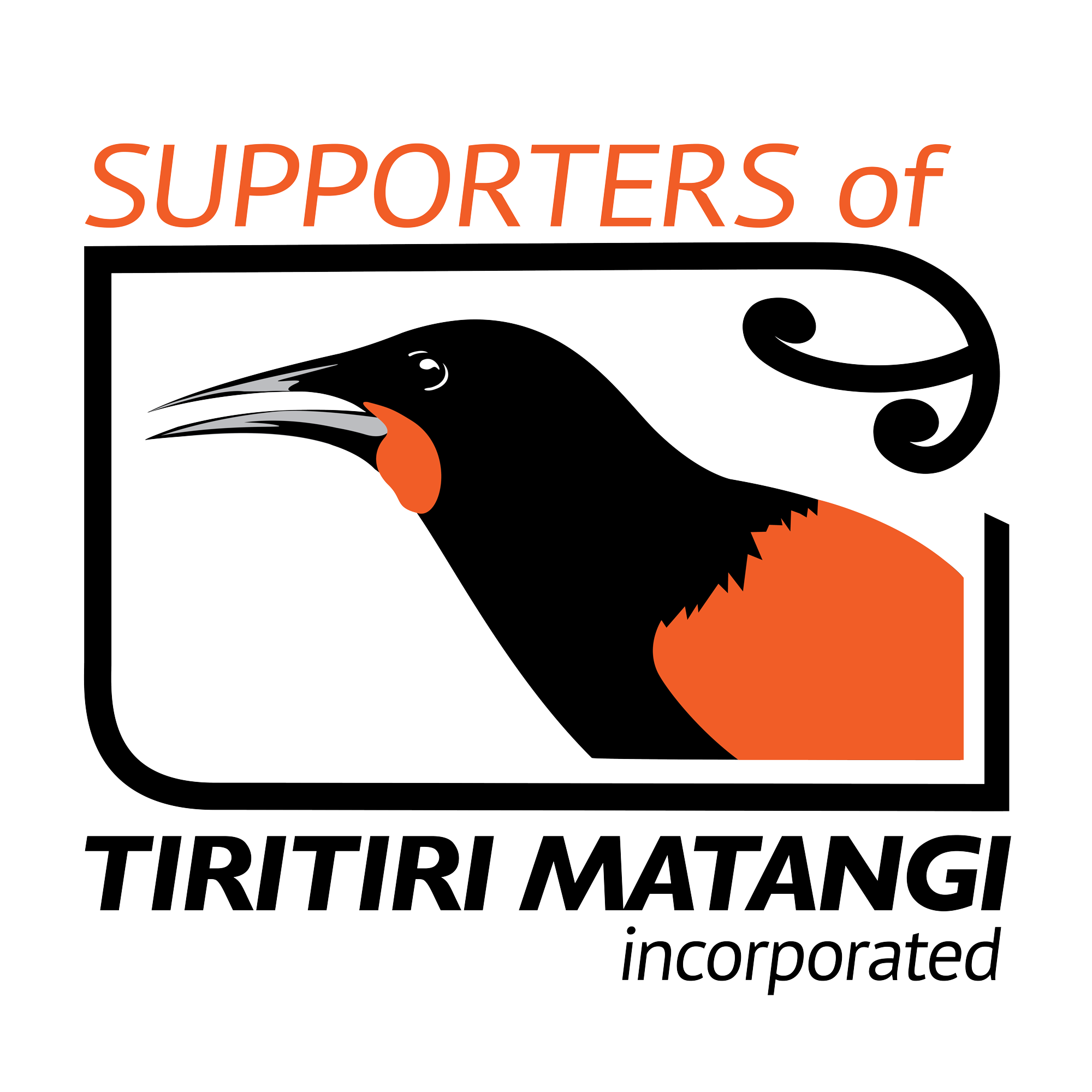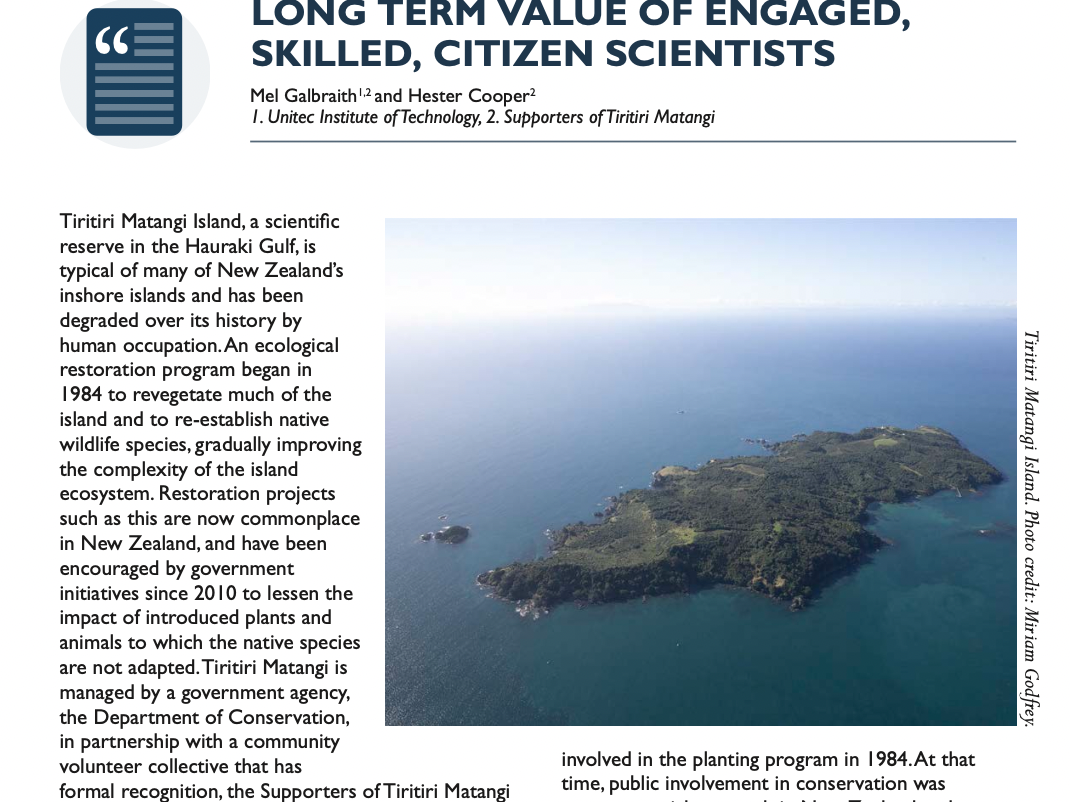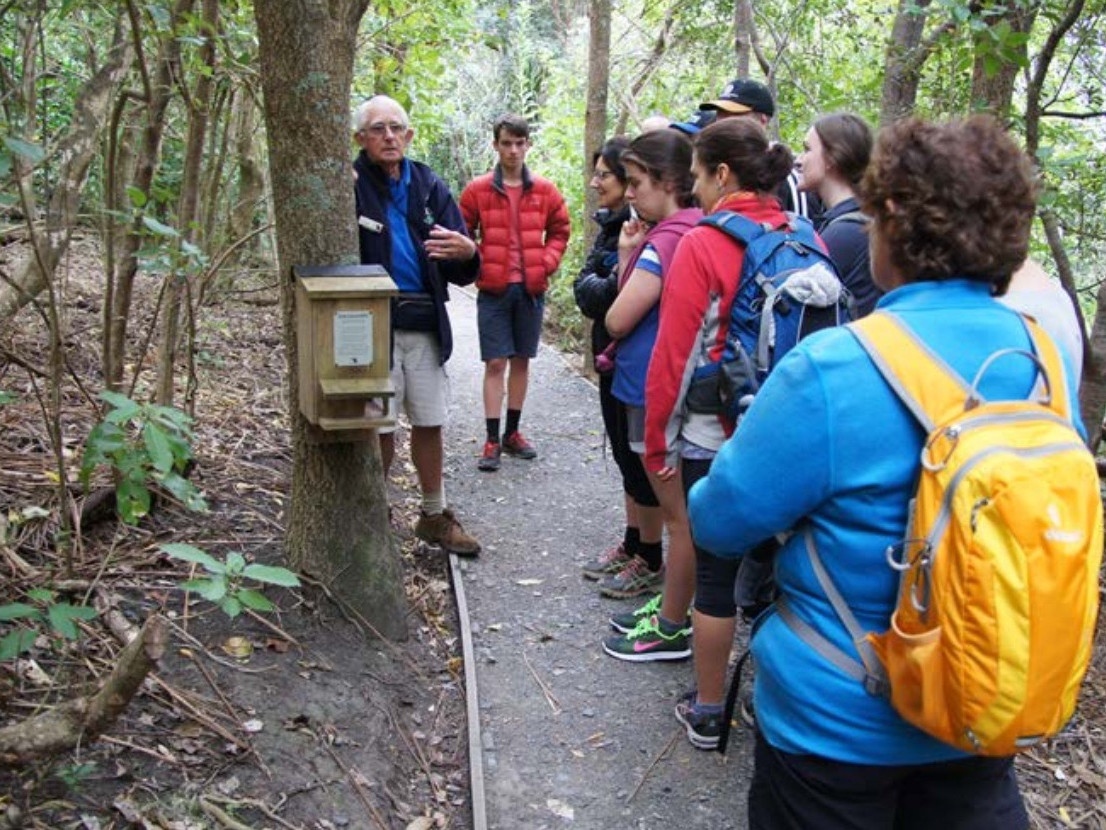People power
Author: Stacey Balich(Information sourced from 'Long term value of engaged, skilled, citizen scientists' Mel Galbraith and Hester Cooper)Date: October 2023
When I first visited Tiritiri Matangi Island, I was amazed by the place. As soon as I stepped off the boat onto the wharf, the sound of bird song was amazing and I knew I was in for a great day. My family and I spent a wonderful day exploring most of the Island, taking in all the beautiful sights and sounds of nature. I fell in love with the Island and knew that I wanted to come back again and again. After visiting a few times, I decided to become a volunteer guide and that’s when I was truly inspired because of the people I was about to meet and get to know. It’s amazing how much you can learn and appreciate when you become a part of something like this.
The Tiritiri Matangi Island project has been around for decades, and it stands out from other conservation initiatives because it involves a volunteer workforce. Unlike other restoration projects where academics and government scientists hold all the power, the volunteers are given the responsibility to lead projects and are treated as true partners. Mel Galbraith and Hester Cooper discuss this approach in their article, ‘Long term value of engaged, skilled, citizen scientists’. The planting program began in 1984, and volunteers were involved from the start. This was a controversial approach in New Zealand at the time because it wasn’t fully supported by government agencies. However, over time, agency philosophies have changed due to the persistence of volunteer engagement and their critical role in conservation management (Galbraith & Cooper). I encourage you to download this article, see below.
Right image: One of the SoTM volunteers guiding a group along the Wattle Track to the lighthouse. Peter is explaining the use of the hihi nest box.Credit: Peter Flynn
The ongoing partnership between ecological science and non-professional practitioners has been crucial in the management of Tiritiri Matangi Island and its protected species. The New Zealand Maritime Museum has also played a role in the restoration of the island’s lighthouse, with recent efforts focused on the installation of a mast. The planning and organization of these restoration efforts have been led by the Supporters of Tiritiri Matangi, exemplifying the importance of community involvement in the conservation of our natural world and heritage.
As I speak to different volunteers, I can sense their love for Tiritiri Matangi Island and its protected species. Their passion is reflected in their smiles and the way their eyes light up as they talk about their favourite areas of interest. For instance, the coordinator of the kōkako team is so happy when discussing these birds, and her enthusiasm is contagious. In the lighthouse museum, the volunteers are equally knowledgeable and passionate, sharing amazing stories about the items on display and their restoration efforts. When I ask volunteers about the working bees that take place on the Island, they proudly tell me about their contributions, such as clearing up a track or rebuilding a path. I love hearing stories about the early days of planting on the Island! There’s something truly special about seeing how the community came together to make it all happen. And those photos from that period are simply eye-opening because they capture the spirit of growth and progress that was happening back then. It’s amazing to see how far the Island has come since those early days and heartening to meet so many people giving their time in such a variety of ways to protect and conserve this beautiful place.
If you want to get involved in a leading-edge project then join the Supporters of Tiritiri Matangi as you will be standing on the shoulders of true giants. Once you become a member you get four Dawn Chorus magazines a year and in these magazines are stories about what is happening on the Island. You will also be on the mailing list for when projects come up if this is something you would be interested in. There are so many ways you can contribute whether it is on or off Island.


